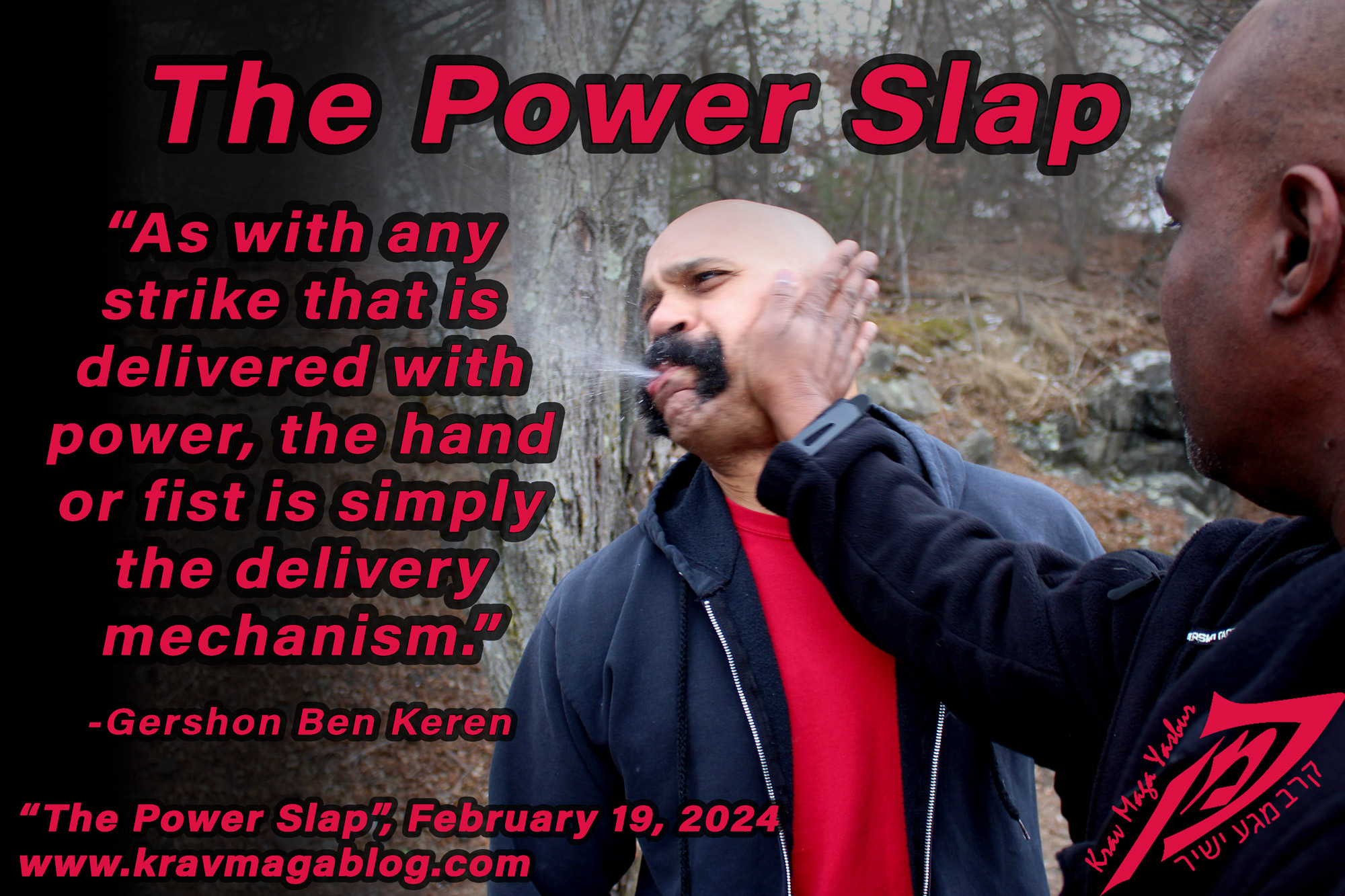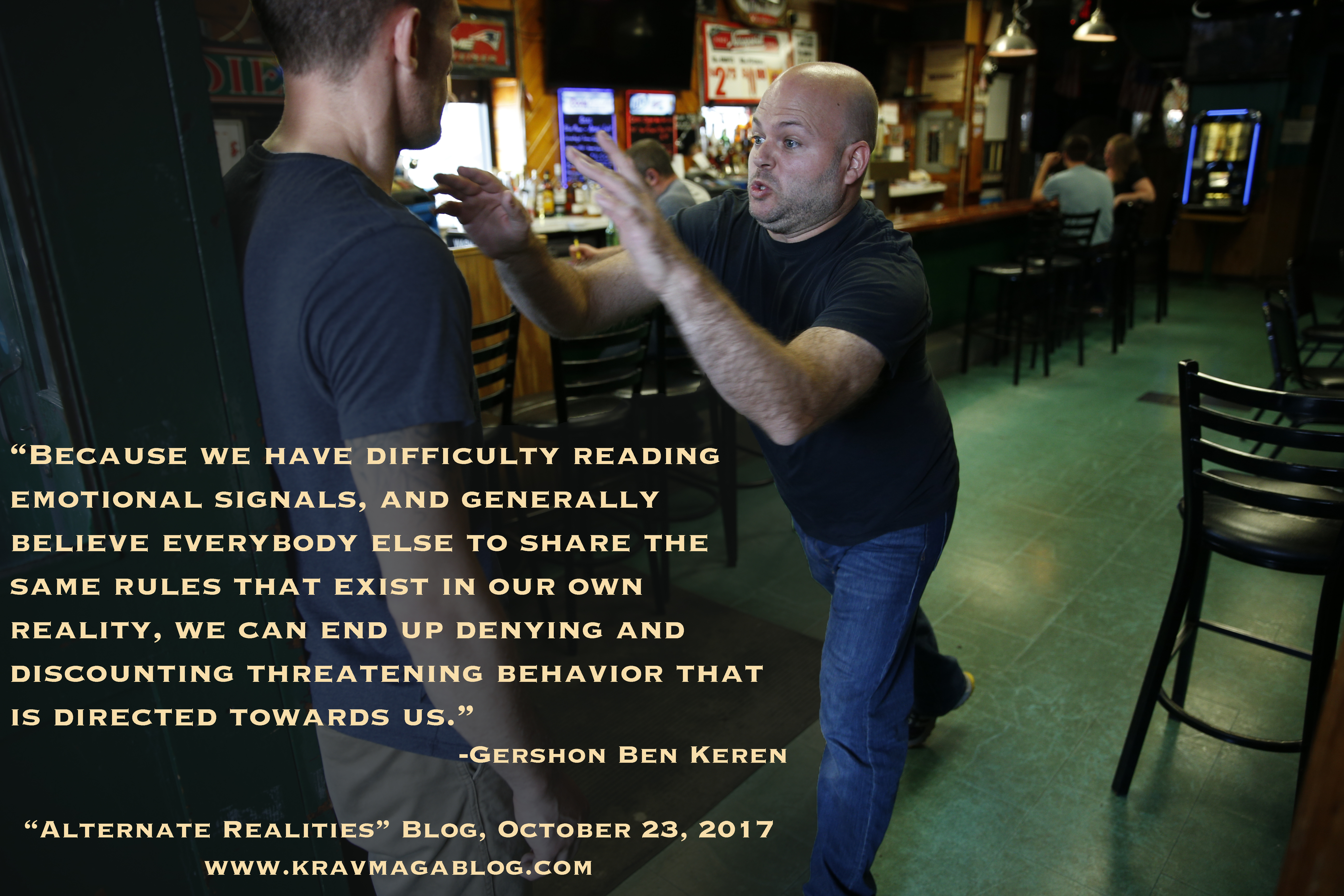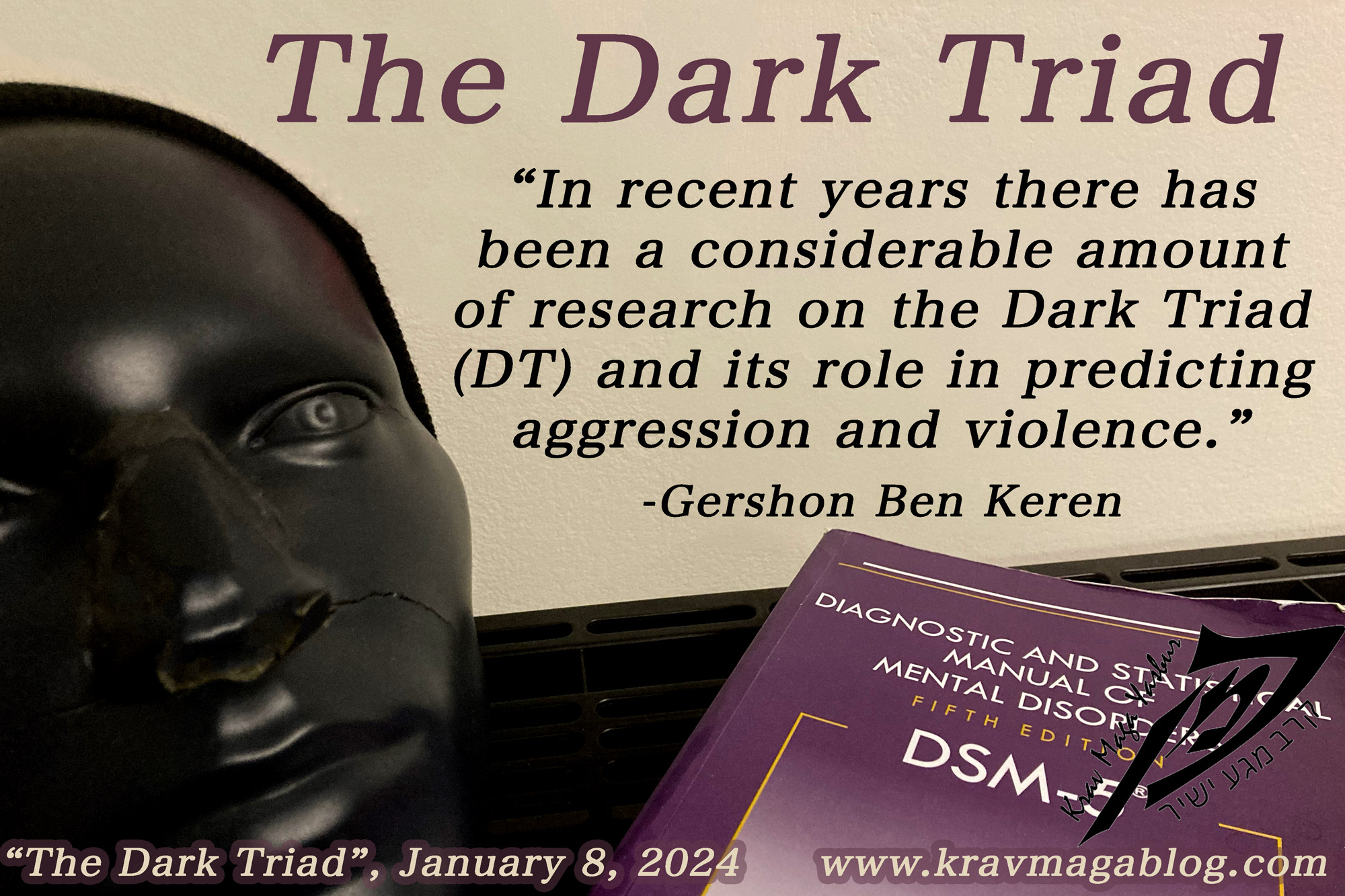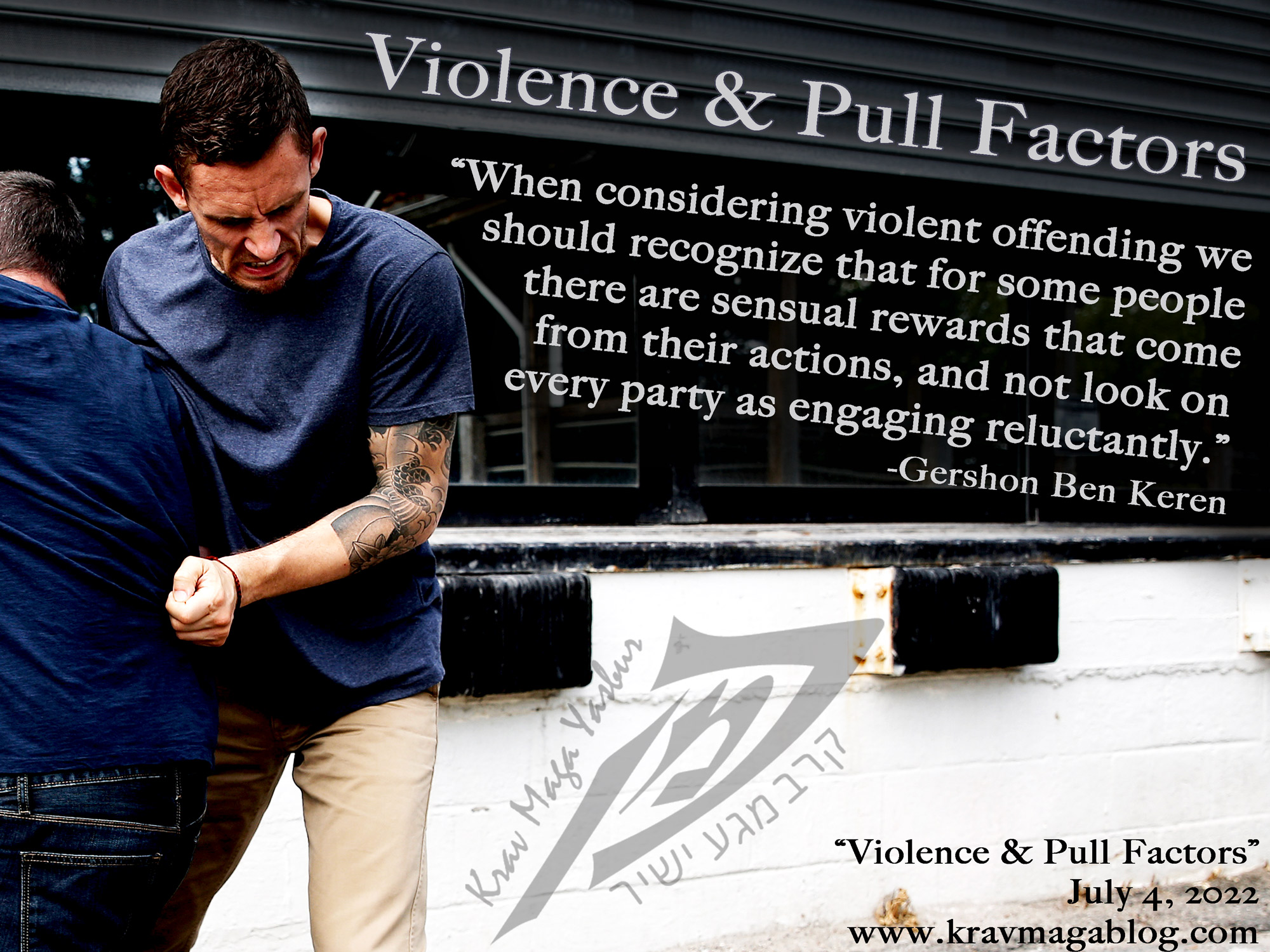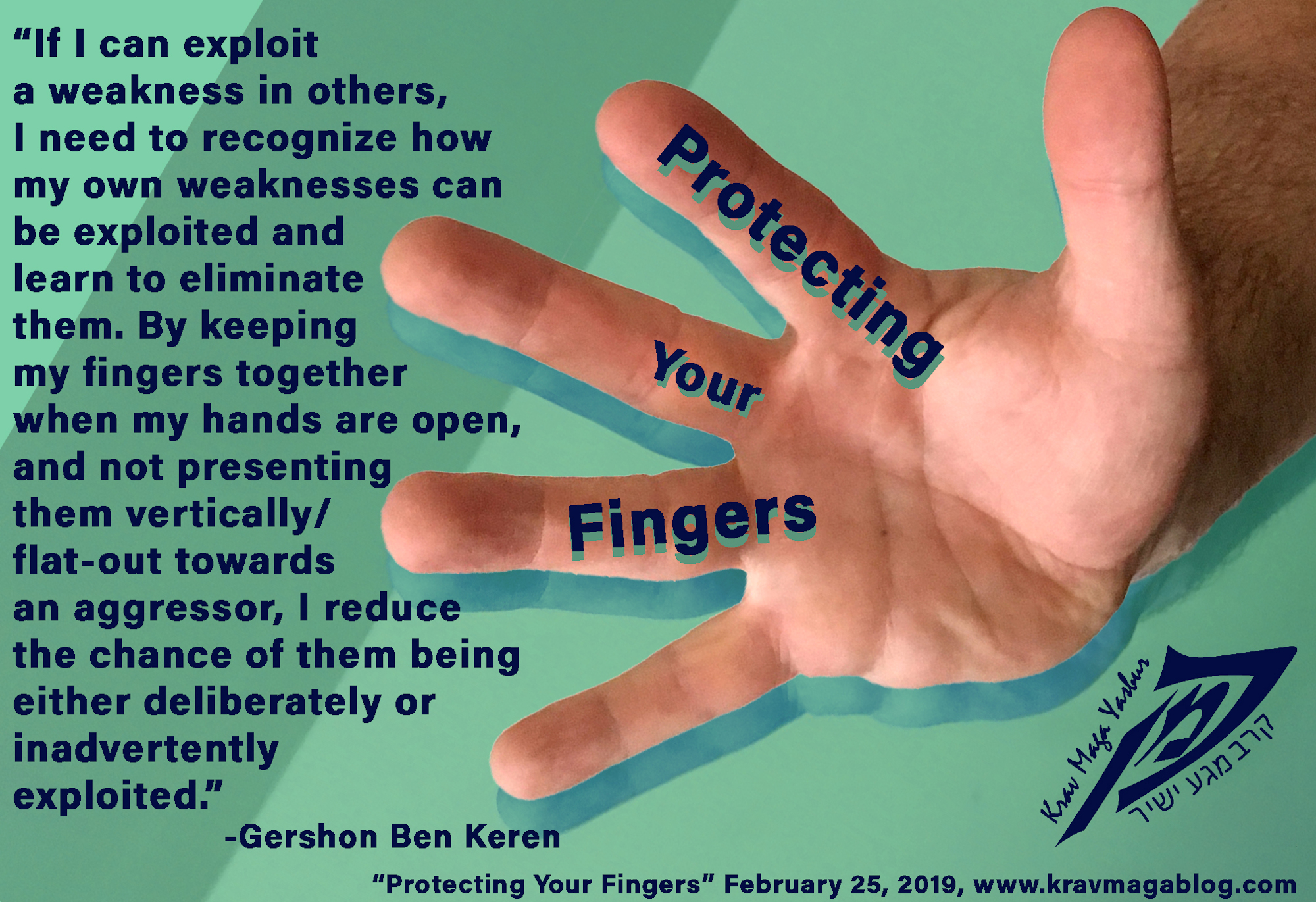Protecting Your Fingers, is an article written by Gershon Ben Keren, a 5th Degree Black Belt in Krav Maga, who teaches Krav Maga in Boston, MA. He has also authored three Amazon best-Selling Books on Krav Maga.
There are certain things we can sometimes forget to protect. When I first started training and grappling with BJJ guys, I found that they often became vulnerable to leg-locks e.g. knee-bars and ankle-locks, etc. During my time practicing and competing in Judo, I’d trained some SAMBO, where these types of attacks/submissions were commonly used, but weren’t so well known (at the time), in BJJ. That’s all changed now but at the time, most practitioners would leave their legs open for attack. In reality-based self-defense, I see many people leave their fingers vulnerable and open to attack. Fingers need to be protected, as if they get damaged in a fight, your ability to punch and grab become severely compromised; I can speak from experience as I have broken several of my fingers, as well as having had the tendons around my right thumb completely ripped/torn – I was fortunate that the incident was over almost as soon as this happened, because my hand was completely inoperable, and required immediate medical treatment; the recovery took 6-8 weeks. Partly due to this experience, I started to see my hands as something that needed to be protected, and became much more aware of avoiding splaying my hands and fingers, to ensure that they never got bent back, and broken etc. In a controlled training environment this isn’t so important, but in the messiness, which is a real-life confrontation, it’s all too easy to see your fingers get compromised when you try to block etc. We are well aware when we throw punches that the fist needs to have integrity so as to not cause injury to ourselves, and should afford this same attention to other positions our hands may be in, in the course of a fight (blocking, de-escalating, etc). In this article I want to look at the importance of protecting your own fingers, and how you can exploit those who don’t, and demonstrate the opportunities that they present.
One of my most successful and consistent tactics when I worked door security was attacking people’s hands and fingers. It still amazes me how many people used to poke me, to illustrate a point, or put their hands out in front of them, fingers splayed, where it was easy to grab a couple of them, bending them back; one of the quickest ways I know to get somebody’s knees to buckle and bend. Whenever I teach de-escalation/interview stances, where the hands are placed out in front, in a placating manner, I make sure to teach that the fingers should not be held up vertically, where they are easy to get a hold of – the only time I teach that the palms should be placed face out, towards an aggressor is if they are temporarily in this position to communicate that somebody should stop what they are doing and back away; and when this is the case, the fingers need to be together rather than apart, where they can be isolated and exploited. This detail may not seem important, in a sterile and sanitized training environment, however in the real world, it is all too easy to have a finger bent back and broken because the hand/palm was positioned with the fingers pointed upwards; it may not even be somebody deliberately exploiting this vulnerability, which causes the damage, but somebody throwing a sloppy punch or similar can catch and injure them.
When blocking, I also teach that the fingers should ideally be next to each other, each one providing support for the other – if you’re caught by surprise, getting them to be tight against each other may be difficult, but as long as they are not open and splayed (which isn’t a natural position for them to be in, anyway), they aren’t going to be overly vulnerable. Although for circular attacks, I tend to use the forearm to block, if I can have my fingers tightened, and close together, my hand has enough integrity to stop an attack (when coupled with my body movement); this increases the length of my blocking surface by almost 6-inches – something that is not insignificant, if all you can do is get your arm up in front of you to block an incoming strike/punch/attack, as opposed to timing the perfect interception, etc. The larger the blocking surface, the more likely it is that you will stop the attack, and if you are able to make a solid structure using the hand, by pulling the fingers together tightly, you increase your chances of intercepting the attack – it’s not ideal to use the hand to block in this way, but it is certainly better than being hit.
When dealing with weapon threats (not attacks) I will always try and get my hands up level with the weapon e.g. if somebody places a knife to my neck/throat, I will shrug my shoulders and raise my hands up in preparation for controlling the weapon/weapon arm, should I need to. It’s imperative in such situations that I keep my fingers close together, effectively joined to each other. If I don’t, it is likely whilst I am adrenalized and under stress and duress, that the fingers will start to twitch and move involuntarily as blood moves from the peripheries towards the major muscle groups. If I am trying to set things up so my hands can get as close to the weapon as possible, I don’t want there to be any movements that will draw attention towards this. By keeping them close together, it is unlikely that they will start to move, and so my attacker’s eyes aren’t drawn to the fact that they are relatively close to the weapon; both making them nervous and putting them on their guard. Twitching fingers draw attention to the close proximity of my hands to the weapon/weapon-arm, and this is something I want to avoid.
I used to exploit poor hand positioning, and I know from experience how effective it can be; once you grab fingers and start bending them back, people will move in such a way to save them – usually bending their knees and trying to lower themselves, etc. If I can exploit a weakness in others, I need to recognize how my own weaknesses can be exploited and learn to eliminate them. By keeping my fingers together when my hands are open, and not presenting them vertically/flat-out towards an aggressor, I reduce the chance of them being either deliberately or inadvertently exploited.
0 COMMENTS
